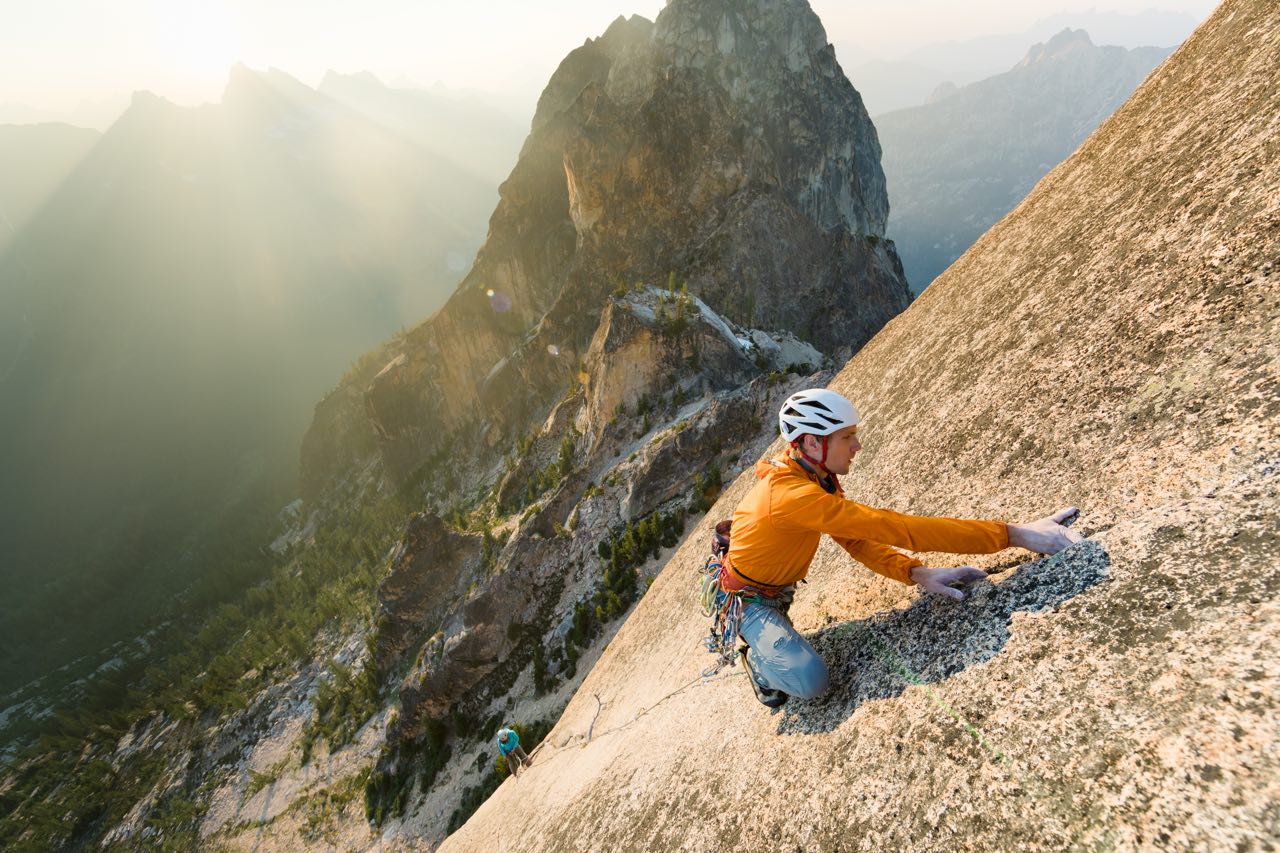1. Get proficient at single-pitch climbing first. This one might seem obvious—but you don’t have to climb multi-pitch routes to gain much of the ease and skills you need to move more comfortably on multi-pitch routes.
2. Make a game plan beforehand. “Solid communication, no unnecessary gear, keep that rack tight,” Goodman says. “Know your partner’s habits.”
RELATED: The Definitive Guide To Climbing's Least Sexy Moves
3. Lead belay with a GriGri and bring the second (and/or third) up on a Peztl Reverso (or any other assisted-braking device). “When the follower(s) get to the belay, you can immediately put the next leader on belay with the GriGri,” he says.
4. Set up a belay for your follower first. “When I’m the leader at the belay, about to bring up the follower, I make sure my belay device is ready to feed before I start pulling rope up,” Goodman says. “So when I hear ‘that’s me,’ my follower knows they’re on belay within five seconds—but this goes with proper communication and knowing your partner’s habits.”

5. Use a cowboy coil for 4th class terrain on the ascent/descent. “It’s a single-strand butterfly coil, but instead of wrapping the ends around the coil and making a ‘backpack’ (or a tied-off coil), keep the coil behind your neck and over your shoulders,” Goodman says. “Then take the top end and girth hitch the bottom of the entire coil, keep the tail short and the hitch tight. You can then rotate the coil to either side of your body, putting your arm through the middle of the coil, like you would do with a mountaineer’s coil. The advantage of this is speed, you can stay tied in to one end and if you’re down climbing, you’re not dragging coil loops behind you.”
6. Stack the rope correctly to avoid problems. “Start with long loops and gradually make them shorter,” he says.
7. Double check rappel ropes. “Make sure it pulls smoothly before the last person leaves the anchor on long raps,” Goodman says.
RELATED: 6 Resources To Help You Get Started Mountaineering
8. Take good note of the terrain on the way up. Watch for significant features that could be helpful in case you need to bail. “And it’s more than OK to bail!” he says.
9. You can actually leave your pack on the ground. “Unless I know, for a fact, thatt I’m going to bivy or be out all night, I leave the pack on the ground,” Goodman says. “Put some Shot Bloks in your pocket, clip a water bottle to your harness and boogie. Also, don’t forget the topo for the climbing and descent routes.”
10. Have a sense of urgency, but don’t hurry.
Goodman likes to stick to a minimalist style, but there are a few things he doesn’t usually leave the ground without:
1. A Zing Anything 28oz Water Bottle which is a nice small-mouth bottle with a secure attachment point. The bottom unscrews so you can also use it as storage. It works well as a juicer, too, but I leave the reamer out when I’m using it for climbing.
2. In most cases I take a softshell jackett—the Whirlwind Hoody is my go-to.
3. A small knife, like the Trango Piranha.
4. Sterling Hollow Block, a pre-sewn prusik.
